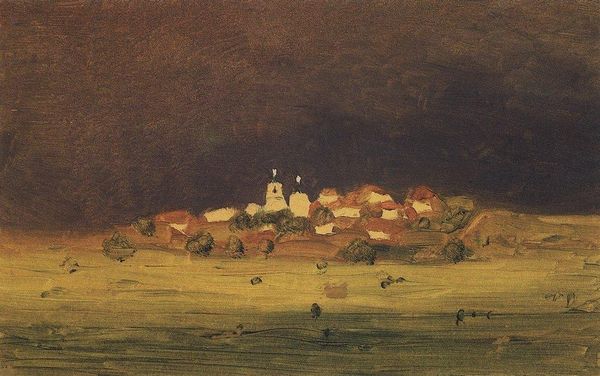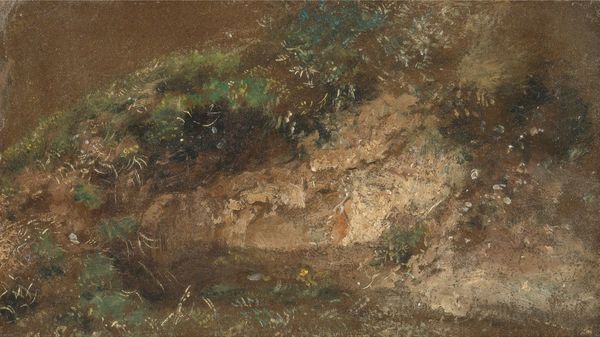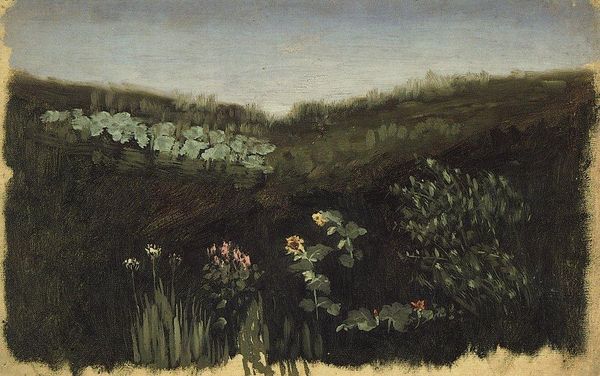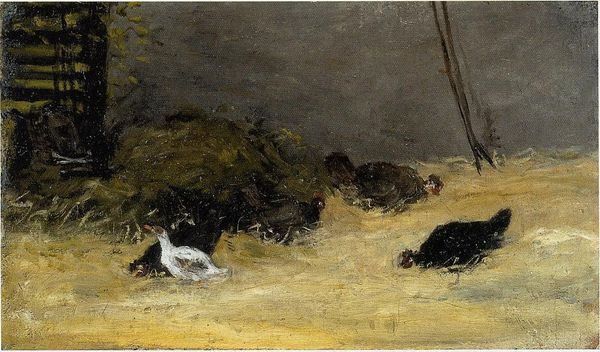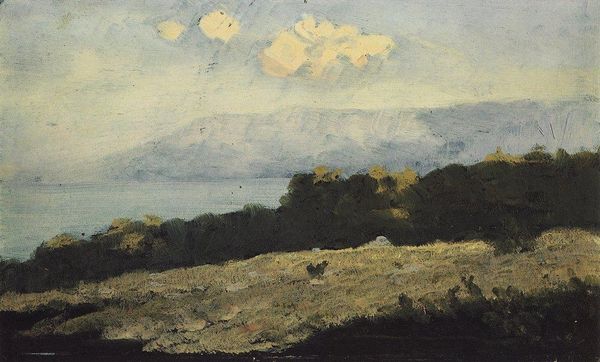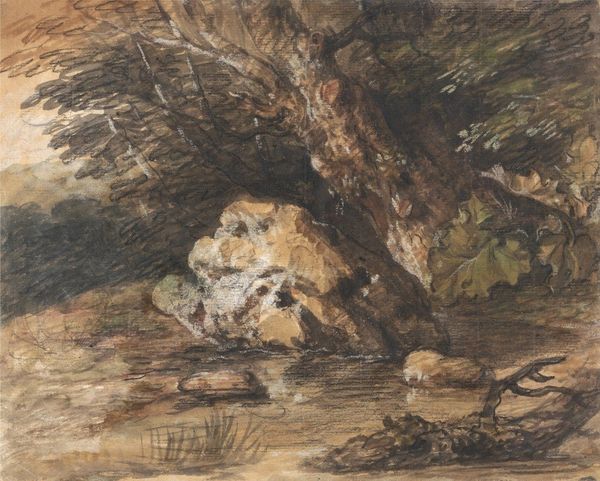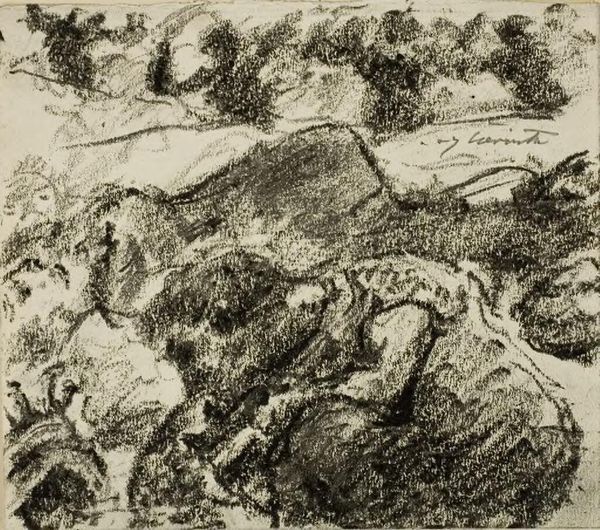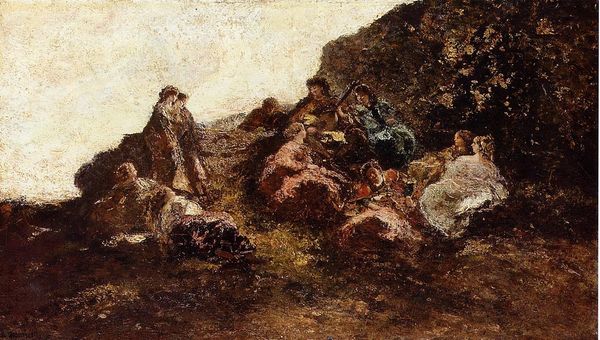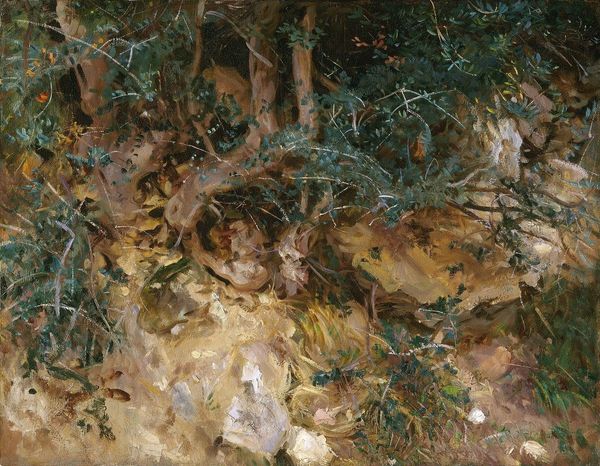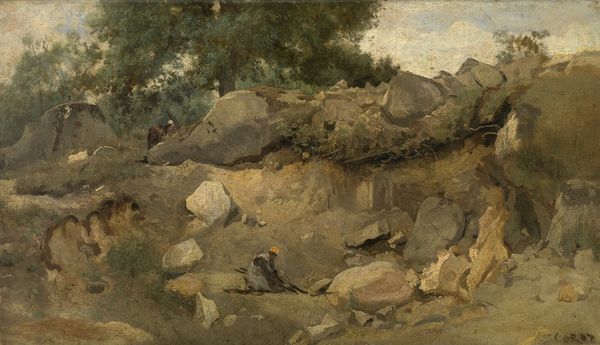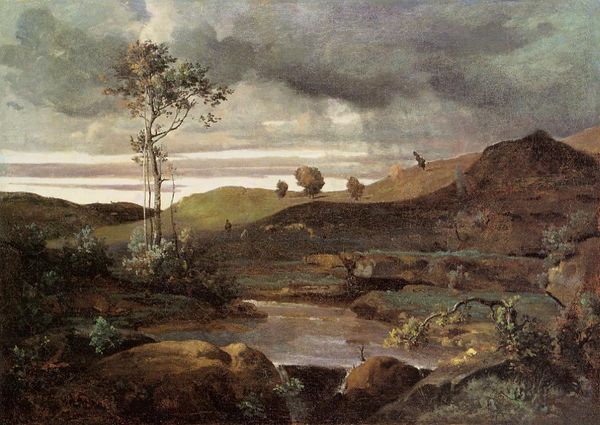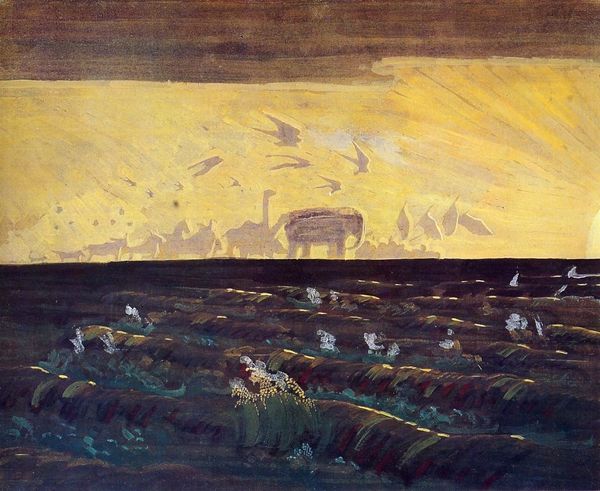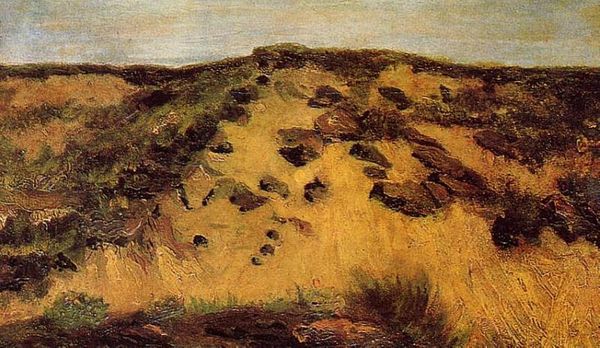
painting, plein-air, oil-paint
#
painting
#
impressionism
#
plein-air
#
oil-paint
#
landscape
#
impressionist landscape
#
oil painting
#
realism
Copyright: Public domain
Curator: Let's take a look at "Mountain slope. Crimea" by Arkhyp Kuindzhi, painted around 1890 using oil on canvas. What are your first thoughts? Editor: Stark. The abrupt transition from a radiant hilltop to almost complete darkness evokes a rather disquieting mood, despite its surface beauty. Curator: Precisely. Consider how the painting embodies impressionistic plein-air techniques. The handling of light and shadow, and the quick, visible brushstrokes aimed at capturing the fleeting effects of nature… Editor: While that’s true, its realism tempers that effect. There’s a tangible, weighty feel to the rocks, and even the scrubby vegetation seems stubbornly earthbound. Doesn't the stark contrast create an unsettling division between the visible, illuminated world and a realm of obscurity? Curator: Indeed. Light in Kuindzhi's landscapes serves as more than a mere optical effect; it functions almost symbolically, illuminating the details of a particular space, like in this Crimea scenery. The painting also embodies key debates of that time; realists embraced naturalism while artists associated with impressionism tried to capture subjective interpretations through fleeting sensations and fragmented forms. Editor: Fascinating to think of that tension playing out here on a single canvas. Looking at the scene depicted, I wonder about the absence of human presence. The scene appears undisturbed and timeless. Perhaps this adds to the somewhat alien feeling despite the familiarity of landscape. Curator: That feeling ties directly into Crimea’s historical status as contested territory—subject to wars and imperial ambitions. The image perhaps alludes to both the region's exposed and fragile beauty. Its elevated positioning highlights the land's precarity in the face of continuous geopolitical struggles. Editor: I now recognize the work on an even deeper level. In this light, Kuindzhi’s treatment of light becomes even more resonant, symbolically representing both illumination and potential shadows for the fate of Crimea itself. Curator: It's extraordinary how analyzing artistic techniques and its historic context changes our understanding of the piece!
Comments
No comments
Be the first to comment and join the conversation on the ultimate creative platform.
